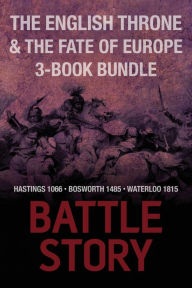The Ismaili Muslims, who belong to the Shia branch of Islam, live in over 25 different countries around the world, mainly in Asia, Africa and the Middle East. Their history has typically been linked to the history of the various countries in which they live, but the worldwide community is united under Prince Karim Aga Khan, the spiritual leader and 49th Imam of the Ismaili Muslims. Few fields of Islamic studies have witnessed as drastic a change as Ismaili studies, due in part to the recent discovery of numerous historical texts, and author Farhad Daftary makes extensive use of these new sources in the Historical Dictionary of the Ismailis.
This comprehensive new reference work is the first of its kind on the Ismailis and presents a summary of the findings of modern scholarship on the Ismaili Shia Muslims and different facets of their heritage. The dictionary covers all phases of Ismaili history as well as the main doctrines of the community. It includes an introductory chapter, which provides a broad historical survey of the Ismailis, followed by alphabetical entries on all major aspects of the community, such as key figures, institutions, traditions, and doctrines. It also contains a chronology, genealogical tables, a glossary, and a substantial bibliography. This book is an excellent access point for students, researchers, and anyone wanting to know more about the Ismailis.
Read More
Booklist
The Ismalii Muslims are part of the Shia branch of Islam, and this historical dictionary is the first comprehensive resource on their history and heritage. A chronology and introduction offer a broad and interesting overview, and entries cover key figures, traditions, and doctrines. Maps, illustrations, and genealogical tables and lists round out the volume, along with an extensive bibliography containing reference works, primary sources, and studies. For special collections and large academic and public libraries.
CHOICE
The Ismailis, who make up the second-biggest branch of Shi'a Islam, live primarily in Asia, the Middle East, and Africa. The most famous Ismaili today is the Aga Khan, who is considered the current spiritual leader of the community. In the eighth century, a split occurred in the Shi'a community over the true leader of the group. Ismailis followed imam Isma'il ibn Jafar as their rightful leader, rather than Musa al-Kadhim. In the 1930s, discoveries of lost historical documents in private collections reopened this area of study. Editor Daftary (Institute of Ismaili Studies, London) incorporates this new research into his dictionary, detailing Ismaili culture, doctrine, personalities, tradition, institutions, history, and locations. This resource features a lengthy introduction tracing the evolution of the Ismailis, a detailed chronology, a comprehensive genealogy of leaders, a glossary, illustrations, maps, and an extensive bibliography. Entries are cross-referenced and account for variant spellings and dates. They include a wide variety of topics, e.g., the Hajj, architecture, the Crusades, Ali ibn Abi Talib, and women. This much-needed reference provides a comprehensive, well-written, insightful look at the Ismailis and should be included in any Islam collection. Summing Up: Highly recommended.
Choice
The Ismailis, who make up the second-biggest branch of Shi'a Islam, live primarily in Asia, the Middle East, and Africa. The most famous Ismaili today is the Aga Khan, who is considered the current spiritual leader of the community. In the eighth century, a split occurred in the Shi'a community over the true leader of the group. Ismailis followed imam Isma'il ibn Jafar as their rightful leader, rather than Musa al-Kadhim. In the 1930s, discoveries of lost historical documents in private collections reopened this area of study. Editor Daftary (Institute of Ismaili Studies, London) incorporates this new research into his dictionary, detailing Ismaili culture, doctrine, personalities, tradition, institutions, history, and locations. This resource features a lengthy introduction tracing the evolution of the Ismailis, a detailed chronology, a comprehensive genealogy of leaders, a glossary, illustrations, maps, and an extensive bibliography. Entries are cross-referenced and account for variant spellings and dates. They include a wide variety of topics, e.g., the Hajj, architecture, the Crusades, Ali ibn Abi Talib, and women. This much-needed reference provides a comprehensive, well-written, insightful look at the Ismailis and should be included in any Islam collection. Summing Up: Highly recommended.
Journal of The Bulletin of the School of Oriental and African Studies
The book. . . is a handy reference on the Ismalis, the second largest branch of Shia Islam, who rose to political power at the beginning of the tenth century by establishing the Fatimid dynasty in North Africa. . . . This work is a welcome addition to the field of Ismali studies. Overall the dictionary is well executed.
Read More

